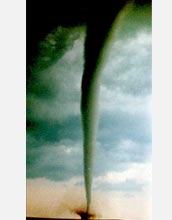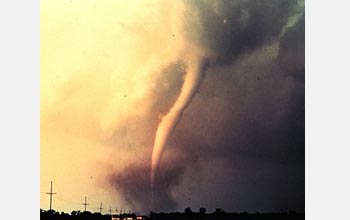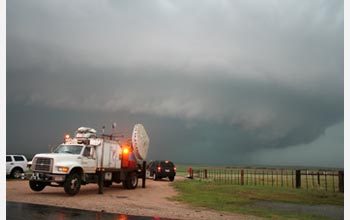All Images
News Release 09-061
Largest Attempt in History to Understand Tornadoes Slated to Begin
Nationwide tornado experiment underway in May
This material is available primarily for archival purposes. Telephone numbers or other contact information may be out of date; please see current contact information at media contacts.

Atmospheric scientists soon will conduct the most ambitious tornado field project in history.
Credit: NOAA
Download the high-resolution JPG version of the image. (385 KB)
Use your mouse to right-click (Mac users may need to Ctrl-click) the link above and choose the option that will save the file or target to your computer.
Genesis and evolution of a rain-wrapped tornado observed west of La Grange, Wyoming. Tornado initially touched-down 11 km west of the camera, but ultimately advanced within 2 km that location. Damage surveys indicate a path length of 12 km and peak intensity rating of EF2. This storm was the subject of coordinated observations by multiple teams in conjunction with the NSF-supported VORTEX2 project on the afternoon of 5 June 2009.
Credit: Rachel Ducharme, a student at Lyndon State College (LSC) and member of the LSC-NCAR (National Center of Atmospheric Research) photogrammetry team

The 1973 Union City, Oklahoma tornado, shown here, was the first tornado captured by the National Severe Storms Laboratory Doppler radar and chase personnel. This tornado is in its early stage of formation.
Credit: NOAA
Download the high-resolution JPG version of the image. (211 KB)
Use your mouse to right-click (Mac users may need to Ctrl-click) the link above and choose the option that will save the file or target to your computer.

Today scientists use such instruments as the Doppler-on-Wheels to study tornadoes.
Credit: Josh Wurman, CSWR
Download the high-resolution JPG version of the image. (5.6 MB)
Use your mouse to right-click (Mac users may need to Ctrl-click) the link above and choose the option that will save the file or target to your computer.


